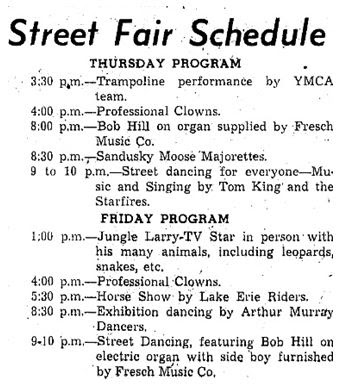The Federal Writers’ Project was a part of President
Franklin D. Roosevelt’s W.P.A. - known as the Works Progress Administration from 1935 to 1939, and the Work Projects Administration from 1939 to its conclusion in 1943. Guides to each of the then 48 states in the U.S.,
as well as Alaska, Puerto Rico and Washington D.C.,
were written during these years, along with guides to smaller regions, including "Vacationland," a term used at the time for the Lake Erie Islands region (including Sandusky).
The WPA Guide to Ohio featured three sections:
general background, cities, and tours. Sandusky
was one of the featured cities in the Ohio Guide.
On page 308 of the book, the authors described Sandusky as “a magical place, when its numerous parks and old shade trees shower their colors everywhere, its limestone buildings take on a regal dignity, its bay quickens with the touch-and-go of barges, tugs, pleasure boats and freighters, and thousands of brightly dressed tourists overrun the city.”
The section of the book on Sandusky continues with historical facts about the city, along with a description of local industries. The Oran Follett House was listed as one of the “Points of Interest” in Sandusky.
The Lake Erie Vacationland in Ohio book offered descriptions of Ohio's Lake Erie islands and communities in Erie and Ottawa Counties, and some suggested tour routes.
It also included a number of photographs and a map of the region.

In November, 1941, the Sandusky Library celebrated American Guide Week, with a display of
books from the American Guide Week series.
The Ohio Guide can be borrowed through the Hoopla digital service, or a print copy can be requested through Clevnet. A reprint copy of the Vacationland book can be checked out from the Sandusky Library, or you can view an original copy in the library's Archives Research Center to learn more about our region as it looked in the 1930s.

 this blog
this blog

















 The
The 


























